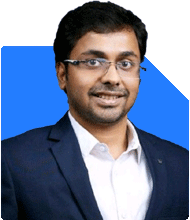Mihir Tanna |831 Answers |Ask -Follow
Tax Expert - Answered on May 08, 2024
He handles various kinds of matters related to direct tax such as PAN/ TAN application; compliance including ITR, TDS return filing; issuance/ filing of statutory forms like Form 15CB, Form 61A, etc; application u/s 10(46); application for condonation of delay; application for lower/ nil TDS certificate; transfer pricing and study report; advisory/ opinion on direct tax matters; handling various income-tax notices; compounding application on show cause for TDS default; verification of books for TDS/ TCS/ equalisation levy compliance; application for pending income-tax demand and refund; charitable trust taxation and compliance; income-tax scrutiny and CIT(A) for all types of taxpayers including individuals, firms, LLPs, corporates, trusts, non-resident individuals and companies.
He regularly represents clients before the income tax authorities including the commissioner of income tax (appeal).... more

tax implications of money sent to close relative abroad
In case of recipient of money, amount received from non-relative on non-specified occasion is taxable.
You may like to see similar questions and answers below
Mihir Tanna |831 Answers |Ask -Follow
Tax Expert - Answered on Sep 07, 2022
Anil Rego |340 Answers |Ask -Follow
Financial Planner - Answered on Jul 13, 2021
Mihir Tanna |831 Answers |Ask -Follow
Tax Expert - Answered on Apr 26, 2023
Sanjeev Govila |458 Answers |Ask -Follow
Financial Planner - Answered on Jan 26, 2024
Samkit Maniar |44 Answers |Ask -Follow
Tax Expert - Answered on Feb 03, 2024
Ramalingam Kalirajan |2651 Answers |Ask -Follow
Mutual Funds, Financial Planning Expert - Answered on May 20, 2024
Ramalingam Kalirajan |2651 Answers |Ask -Follow
Mutual Funds, Financial Planning Expert - Answered on May 20, 2024
Ramalingam Kalirajan |2651 Answers |Ask -Follow
Mutual Funds, Financial Planning Expert - Answered on May 20, 2024
Ramalingam Kalirajan |2651 Answers |Ask -Follow
Mutual Funds, Financial Planning Expert - Answered on May 20, 2024
Ramalingam Kalirajan |2651 Answers |Ask -Follow
Mutual Funds, Financial Planning Expert - Answered on May 20, 2024
Ramalingam Kalirajan |2651 Answers |Ask -Follow
Mutual Funds, Financial Planning Expert - Answered on May 20, 2024
Ramalingam Kalirajan |2651 Answers |Ask -Follow
Mutual Funds, Financial Planning Expert - Answered on May 20, 2024
Ramalingam Kalirajan |2651 Answers |Ask -Follow
Mutual Funds, Financial Planning Expert - Answered on May 20, 2024
Ramalingam Kalirajan |2651 Answers |Ask -Follow
Mutual Funds, Financial Planning Expert - Answered on May 20, 2024
Ramalingam Kalirajan |2651 Answers |Ask -Follow
Mutual Funds, Financial Planning Expert - Answered on May 20, 2024

























